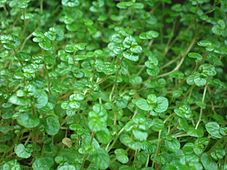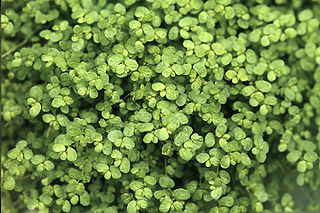
Datura is a genus of nine species of highly poisonous, vespertine-flowering plants belonging to the nightshade family (Solanaceae). They are commonly known as thornapples or jimsonweeds, but are also known as devil's trumpets. Other English common names include moonflower, devil's weed, and hell's bells. All species of Datura are extremely poisonous and potentially psychoactive, especially their seeds and flowers, which can cause respiratory depression, arrhythmias, fever, delirium, hallucinations, anticholinergic syndrome, psychosis, and death if taken internally.

Narcissus is a genus of predominantly spring flowering perennial plants of the amaryllis family, Amaryllidaceae. Various common names including daffodil, narcissus and jonquil, are used to describe all or some members of the genus. Narcissus has conspicuous flowers with six petal-like tepals surmounted by a cup- or trumpet-shaped corona. The flowers are generally white and yellow, with either uniform or contrasting coloured tepals and corona.
Wild ginger may refer to any of a variety of plants, often with a similar appearance, odour or taste to cultivated ginger. Species involved include:
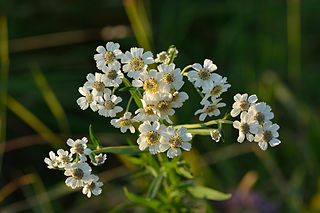
Achillea ptarmica is a European species of herbaceous perennial flowering plant in the genus Achillea of the daisy family Asteraceae. Common names include the sneezewort, sneezeweed, bastard pellitory, European pellitory, fair-maid-of-France, goose tongue, sneezewort yarrow, wild pellitory, and white tansy. It is widespread across most of Europe and naturalized in scattered places in North America. It is native to Europe and western Asia.
Angel's trumpet may refer to:

Brugmansia is a genus of seven species of flowering plants in the nightshade family Solanaceae. They are woody trees or shrubs, with pendulous flowers, and have no spines on their fruit. Their large, fragrant flowers give them their common name of angel's trumpets, adjacent to the nickname devil's trumpets of the closely related genus Datura.
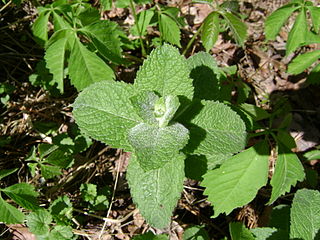
Mentha suaveolens, the apple mint, pineapple mint, woolly mint or round-leafed mint, is a member of the mint family Lamiaceae. It is native to southern and western Europe including the Mediterranean region. It is a herbaceous, upright perennial plant that is most commonly grown as a culinary herb or for ground cover.
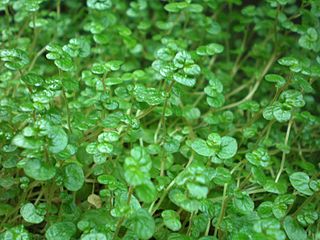
Soleirolia soleirolii is a flowering plant in the nettle family. It has a number of common names, including baby's tears, angel's tears, peace in the home, bits and pieces, bread and cheese, Corsican creeper, Corsican curse, friendship plant, mind-your-own-business, pollyanna vine, Paddy's wig, and mother of thousands. It should not be confused with Kalanchoe daigremontiana, another plant known as mother of thousands.
Chia or CHIA may refer to:
Pheasant's eye or pheasant's-eye is a common name for several plants with showy flowers and may refer to:

Madia elegans is an annual herbaceous plant species in the family Asteraceae. It is generally known as the common madia, but there are several subspecies known by various common names.

Brugmansia suaveolens, Brazil's white angel trumpet, also known as angel's tears and snowy angel's trumpet, is a species of flowering plant in the nightshade family Solanaceae, native to south eastern Brazil, but thought to be extinct in the wild. Like several other species of Brugmansia, it exists as an introduced species in areas outside its native range. It is a tender shrub or small tree with large semi-evergreen leaves and fragrant yellow or white trumpet-shaped flowers.

Aubrieta deltoidea is a species of flowering plant in the mustard family. Common names include lilacbush, purple rock cress and rainbow rock cress. It should be grown in zones 4a to 9b.

Aconitum lamarckii, known by the common name Northern wolf's-bane, is a species of herbaceous flowering plant of the genus Aconitum, in the buttercup family, Ranunculaceae. It is native to Europe and sometimes cultivated in gardens in temperate zones for its showy flowers. It blooms from early to late summer with yellow flowers produced on tall, thin, somewhat lax stems.
Showy beardtongue or showy penstemon is a common name for several plants and may refer to:
This page is based on this
Wikipedia article Text is available under the
CC BY-SA 4.0 license; additional terms may apply.
Images, videos and audio are available under their respective licenses.


